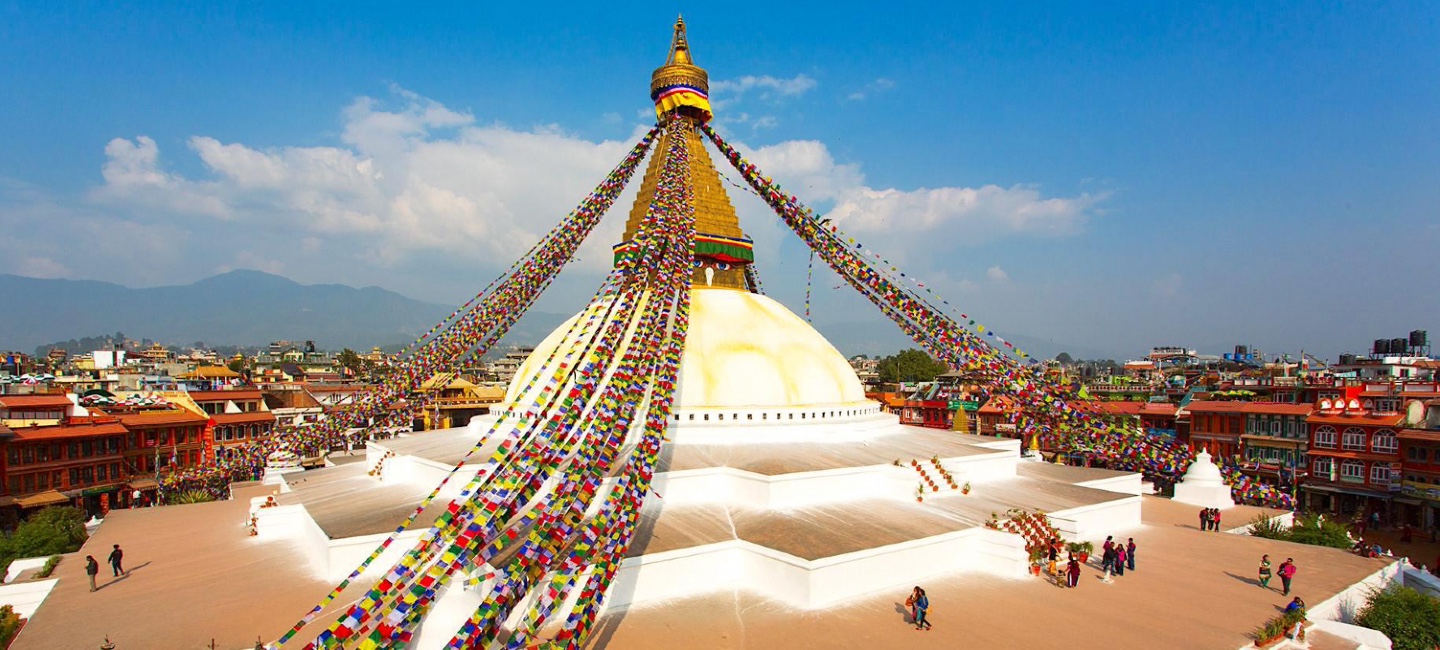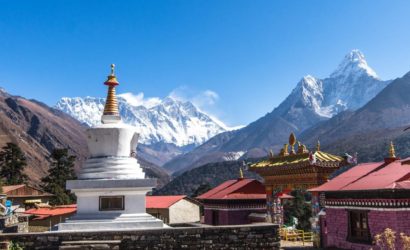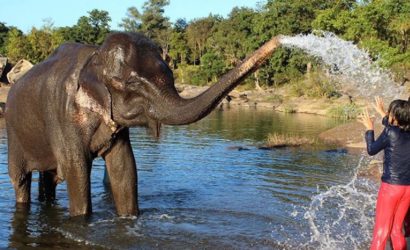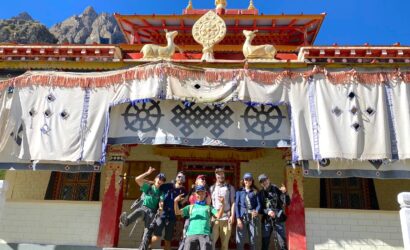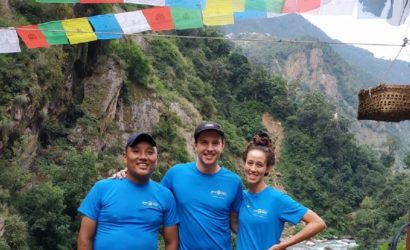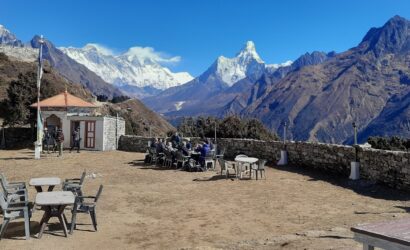Kathmandu valley is known for its rich art and cultural heritages. The valley holds seven out of eight UNESCO World Heritage sites in Nepal. Due to its artistic and historic heritages, Kathmandu is also known to be the Living museum.
Kathmandu Valley one day tour includes the visit to some of these famous cultural heritage sites in the valley. Kathmandu is a city with a great number or Hindu temples, Buddhist Stupas and monasteries. It is often considered to be an open museum of medieval arts and architecture.
Himalayan Discovery Adventure provides this fantastic one day tour around the Kathmandu valley. The tour best suits the travelers looking to explore the city of Kathmandu within a short period of time.
Details of the places of interest on your Kathmandu Private One Day Tour:
Swayambhunath Temple:
A golden spire crowning a conical wooded hill, Swayambhunath Stupa is the most ancient holy shrines in Kathmandu valley. The temple has a lofty white dome and glittering golden spire that is visible from all sides of the valley. On each of the four sides of the main stupa there is a pair of all-seeing eyes of God. Historical records found on a stone inscription give evidence that the Stupa was already an important Buddhist pilgrimage destination by the 5th century AD. However, the origin of the temple dates long before the arrival of Buddhism in the valley.
The historically and culturally significant Swayambhunath Stupa is situated at the top of the hill and offers a panoramic view of the Kathmandu valley. The temple complex has many statues and temples of several Hindu and Buddhist god and goddess side by side reflecting the religious harmony in the country. The local devotees make a ritual circumnavigation of the stupa, spinning the prayer wheels set into its base.
Soaring above the city on a hilltop, the ‘Monkey Temple’ is a fascinating jumble of Buddhist and Hindu iconography and is considered to be one of the definitive experiences of Kathmandu.
Pashupatinath Temple:
Pashupatinath Temple standing on the banks of the holy Bagmati River is one of the most sacred Hindu temples in the world. The temple site dates to the 5th/6th century, but the present temple was built only in the sixteenth century.
The Pashupatinath temple is two-tiered pagoda temple built on a single-tier plinth with richly ornamented gilt and silver-plated doors are on all four sides. The Pashupati Temple’s extensive grounds include many other old and important temples, shrines and statues. Every year, thousands of Shiva devotees from all around the world visit the holy temple.
The entrance to the main temple is restricted for Non-Hindus, but the surrounding temple complex with sadhus, devotees, lingams and Ghata is fascinating and highly photogenic. The two tier pagoda style temple is also visible from the eastern side of the river. The temple is a great way to explore the rich Hindu culture and tradition of the valley.
Boudhanath Stupa:
Boudhanath Stupa, located on the eastern outskirts of Kathmandu is the largest stupa in Nepal and the holiest Tibetan Buddhist temple outside Tibet. The stupa is filled with rich in Buddhist symbolism. The nine levels of the Stupa represent the mythical Mt. Meru, center of the cosmos; and the 13 symbolizes the 13 paths to nirvana, or “Bodhi”.
As at Swayabunath, Boudhanath is topped with a square tower bearing the omnipresent eyes on all four sides. Boudhanath Stupa is closely associated with the Bodhisattva Avalokiteshvara whose 108 forms are depicted in sculptures around the base.
Surrounding the Boudhanath Stupa are streets and narrow alleys lined with colorful Shops, Tibetan Buddhist monasteries, and restaurants. Tibetan Buddhist culture is accessible and unfettered at the place.
Kathmandu Durbar Square:
Kathmandu Durbar Square is a historically and culturally significant place in the Kathmandu valley. The complex holds many pagoda style temples, beautiful courtyards and the Hanuman Dhoka Durbar (Palace), which was the royal residence till the 19th century. The Durbar is still the site for many important ceremonies like Jatras and coronation.
A visit to Durbar square is like exploring a museum without the walls. At every turn, you will come across a beautiful pagoda styled temple with intricately carved wooden windows, huge stone images, and inconspicuous shrines.
Taleju Temple, Mahendreshvara Temple, Jagannath temple and Dequtale temple are some major temples in the square. One of the major attractions of the Square is, the Kumari Ghar, home of the Living Goddess – The Kumari.
Teeming with idols of gods and goddesses, crowded with temples and shrines and bustling stoned alleys, a visit to Kathmandu Durbar Square will make you feel like you have travelled centuries back in time.
Patan Durbar Square
Patan is the oldest of all the three cities of Kathmandu valley and. Known for its artistic heritages, the Patan Durbar Square is full of beautiful palace, historic courtyards, Hindu temples and Buddhist monuments, bronze gateways, guardian deities and wonderful carvings.
There are fine pagoda and Shikhara style temples, stone statues and unique artistic Newar architectures in this Durbar square. Krishna Temple, Bhimsen Temple and the Golden Temple of Hiranya Varna are some of the main attractions of the Patan.
Trip Details:
The four to five-hour long private tour starts at 9 A.M from the Himalaya Discovery Adventure office in Thamel.
Swayambhunath Temple:
A golden spire crowning a conical wooded hill, Swayambhunath Stupa is the most ancient holy shrines in Kathmandu valley. The temple has a lofty white dome and glittering golden spire that is visible from all sides of the valley.
On each of the four sides of the main stupa there is a pair of all seeing eyes of God. Historical records found on a stone inscription give evidence that the Stupa was already an important Buddhist pilgrimage destination by the 5th century AD. However, the origin of the temple dates long before the arrival of Buddhism in the valley.
The historically and culturally significant Swayambhunath Stupa is situated at the top of the hill and offers a panoramic view of the Kathmandu valley.
The temple complex has many statues and temples of several Hindu and Buddhist god and goddess side by side reflecting the religious harmony in the country. The local devotees make a ritual circumnavigation of the stupa, spinning the prayer wheels set into its base.
Soaring above the city on a hilltop, the ‘Monkey Temple’ is a fascinating jumble of Buddhist and Hindu iconography and is considered to be one of the definitive experiences of Kathmandu.
Pashupatinath Temple:
Pashupatinath Temple standing on the banks of the holy Bagmati River is one of the most sacred Hindu temples in the world. The temple site dates to the 5th/6th century, but the present temple was built only in the sixteenth century.
The Pashupatinath temple is two-tiered pagoda temple built on a single-tier plinth with richly ornamented gilt and silver-plated doors are on all four sides. The Pashupati Temple’s extensive grounds include many other old and important temples, shrines and statues. Every year, thousands of Shiva devotees from all around the world visit the holy temple.
The entrance to the main temple is restricted for Non-Hindus, but the surrounding temple complex with sadhus, devotees, lingams and Ghata is fascinating and highly photogenic. The two tier pagoda style temple is also visible from the eastern side of the river. The temple is a great way to explore the rich Hindu culture and tradition of the valley.
Boudhanath Stupa:
Boudhanath Stupa, located on the eastern outskirts of Kathmandu is the largest stupa in Nepal and the holiest Tibetan Buddhist temple outside Tibet. The stupa is filled with rich in Buddhist symbolism.
The nine levels of the Stupa represent the mythical Mt. Meru, center of the cosmos; and the 13 symbolizes the 13 paths to nirvana, or “Bodhi”. As at Swayabunath, Boudnath is topped with a square tower bearing the omnipresent eyes on all four sides.
Boudhanath Stupa is closely associated with the Bodhisattva Avalokiteshvara whose 108 forms are depicted in sculptures around the base.
Surrounding the Boudhanath Stupa are streets and narrow alleys lined with colorful Shops, Tibetan Buddhist monasteries, and restaurants. Tibetan Buddhist culture is accessible and unfettered at the place.
Kathmandu Durbar Square:
Kathmandu Durbar Square is a historically and culturally significant place in the Kathmandu valley. The complex holds many pagoda styled temples, beautiful courtyards and the Hanuman Dhoka Durbar (Palace), which was the royal residence till the 19th century.
The Durbar is still the site for many important ceremonies like Jatras and coronation. A visit to Durbar square is like exploring a museum without the walls. At every turn, you will come across a beautiful pagoda styled temple with intricately carved wooden windows, huge stone images, and inconspicuous shrines.
Taleju Temple, Mahendreshvara Temple, Jagannath temple and Dequtale temple are some major temples in the square. One of the major attractions of the Square is, the Kumari Ghar, home of the Living Goddess – The Kumari.
Teeming with idols of gods and goddesses, crowded with temples and shrines and bustling stoned alleys, a visit to Kathmandu Durbar Square will make you feel like you have travelled centuries back in time.
Patan Durbar Square
Patan is the oldest of all the three cities of Kathmandu valley and. Known for its artistic heritages, the Patan Durbar Square is full of beautiful palace, historic courtyards, Hindu temples and Buddhist monuments, bronze gateways, guardian deities and wonderful carvings.
There are fine pagoda and Shikhara style temples, stone statues and unique artistic Newar architectures in this Durbar square. Krishna Temple, Bhimsen Temple and the Golden Temple of Hiranya Varna are some of the main attractions of the Patan.

